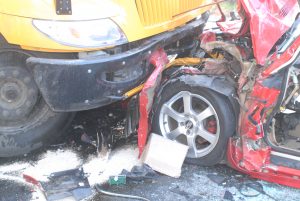On March 29, 2022, the Chronicle of Higher Education published an article referencing the “landmark decision” of Nguyen v. Massachusetts Institute of Technology, 479 Mass. 436 (2018) which reportedly prompted the Massachusetts Association of Community Colleges [MACC] to develop a system-wide protocol “to identify, assess the risk of, intervene in and respond to suicidal behavior.” See Nell Gluckman and Katherine Mangan, “The Hardest Judgment: When suicide is the risk, campuses struggle with doing too little or too much.” Chronicle of Higher Education, March 29, 2022. Attorney Jeffrey S. Beeler at Heinlein Beeler Mingace & Heineman, P.C. was counsel for the Estate of Han Duy Nguyen.
The Chronicle is not alone in noting the impact of the Nguyen decision on student safety and the operations of Institutions of Higher Education [IHEs] in relation to the risk of student suicide. In Nguyen, many Massachusetts IHEs advocated – by way of an Amicus brief — that they should owe no duty of care to students at risk of suicide. The signatory IHEs included: Amherst College, Bentley University, Berklee College of Music, Boston College, Boston University, Brandeis University, College of the Holy Cross, Emerson College, Endicott College, Harvard University, Northeastern University, Simmons College, Smith College, Stonehill College, Suffolk University, Tufts University, Williams College and Worcester Polytechnic University. The Supreme Judicial Court [SJC], in large part, rejected the deplorable position taken by the IHEs in Nguyen. Revealingly, after the issuance of Nguyen, the author of the IHE’s Nguyen Amicus brief addressed Nguyen’s impact and was quoted as stating that: “all colleges and universities are aware of the SJC’s Nguyen standard, [and] they all either have adopted or are in the process of adopting suicide protocols, not just to meet the SJC’s standards, but because they want to try to prevent student suicides to the extent possible.” Eric T. Berkman, Harvard Facing Liability for Student’s Suicide, Massachusetts Lawyers Weekly at 1 (Sept. 19, 2019).
That belated action by IHEs is cold comfort to victims’ families and much work remains to be done in further defining the law with an eye toward saving student lives.
 Boston Injury Attorney Blog
Boston Injury Attorney Blog


